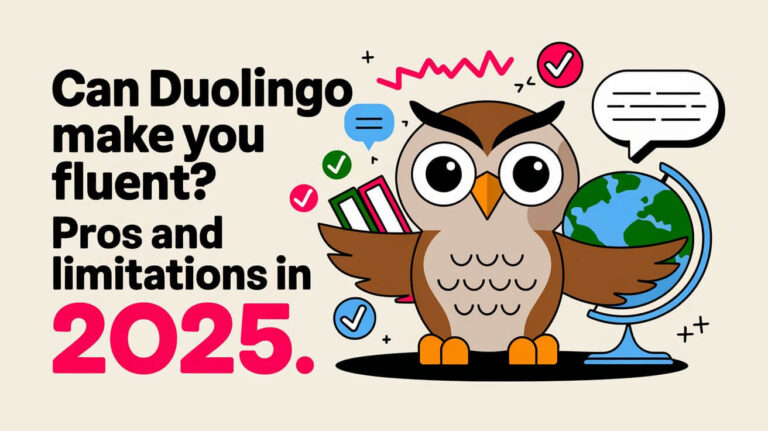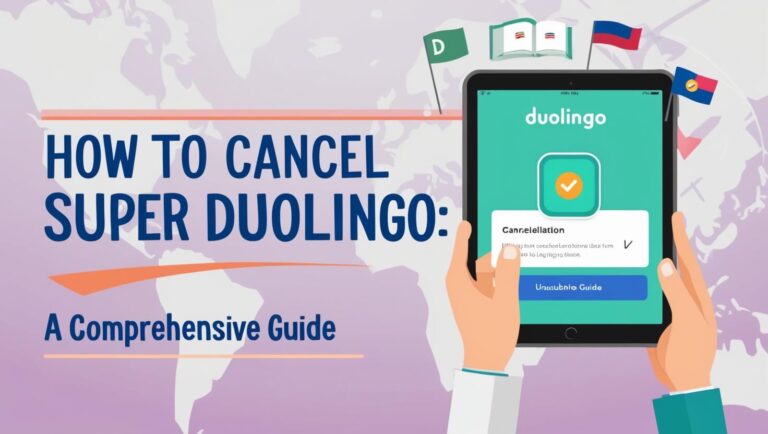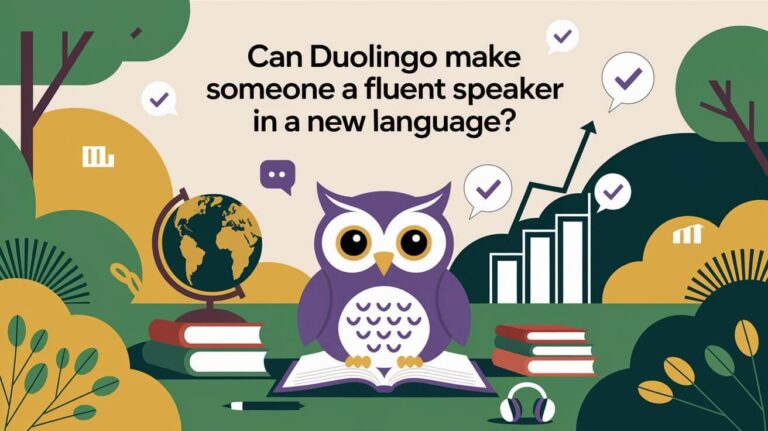Duolingo has 10 leagues that form the backbone of its competitive learning system. These leagues, ranging from Bronze to Diamond, offer a unique way to motivate language learners and track their progress. In this guide, we’ll explore each league, how they work, and how you can climb to the top.
Introduction to Duolingo Leagues
Duolingo, the popular language learning app, uses a league system to add a competitive edge to the learning process. But what exactly are these leagues, and why should you care about them?
What are Duolingo Leagues?
Duolingo leagues are weekly competitions where users compete against others based on the amount of XP (experience points) they earn. Each league has its own set of rules for promotion and demotion, creating a dynamic environment that encourages consistent learning.
The importance of leagues in language learning
Leagues serve as a powerful motivational tool. They tap into our natural competitive spirit, pushing us to practice more regularly and for longer periods. This increased engagement can lead to faster language acquisition and a more enjoyable learning experience.
The 10 Duolingo League Tiers
Let’s break down each of the 10 Duolingo leagues, from the beginner-friendly Bronze to the elite Diamond.
Bronze League: Starting your journey
The Bronze League is where every Duolingo user begins their competitive journey. It’s the most accessible league, perfect for newcomers to get a feel for the competition.
Key features:
- Easiest to advance from
- Great for building confidence
- Top 20 users advance to Silver
Silver League: Stepping up your game
In the Silver League, the competition starts to heat up. Users here have gotten a taste of success and are hungry for more.
What to expect:
- More active competitors
- Higher XP requirements
- Top 15 users move to Gold
Gold League: Reaching for excellence
The Gold League represents a significant milestone. Users here are typically consistent learners with a good grasp of the Duolingo system.
Highlights:
- Tougher competition
- Requires strategic XP earning
- Top 10 advance to Sapphire
Sapphire League: Shining bright
Sapphire marks the entry into the upper echelons of Duolingo leagues. The competition gets noticeably fiercer here.
Notable aspects:
- Highly active users
- Significant time investment required
- Top 7 move to Ruby
Ruby League: A fiery challenge
The Ruby League is where casual users start to thin out. Those who reach this level are often deeply committed to their language learning goals.
What sets it apart:
- Intense competition
- Requires daily engagement
- Top 7 advance to Emerald
Emerald League: Green with determination
Emerald League users are among the top performers on Duolingo. Reaching and maintaining this level requires dedication and skill.
Key characteristics:
- Very high XP thresholds
- Strategic use of XP boosts crucial
- Top 7 move to Amethyst
Amethyst League: Purple prowess
The Amethyst League is home to some of Duolingo’s most dedicated learners. Competition here is fierce, with users employing various strategies to stay ahead.
What to know:
- Extremely active user base
- Requires careful planning to advance
- Top 7 promoted to Pearl
Pearl League: A rare achievement
Reaching the Pearl League is a significant accomplishment. Users here are typically language learning enthusiasts who’ve made Duolingo a major part of their daily routine.
Standout features:
- Elite group of learners
- High-pressure environment
- Top 7 advance to Obsidian
Obsidian League: Dark and mysterious
The Obsidian League is the penultimate tier in Duolingo’s league system. Only the most dedicated and skilled learners make it this far.
What makes it special:
- Extremely competitive
- Requires mastery of Duolingo’s features
- Top 5 advance to Diamond
Diamond League: The pinnacle of success
The Diamond League represents the highest achievement in Duolingo’s competitive system. Users here are the cream of the crop, consistently outperforming thousands of other learners.
Key aspects:
- Most challenging league
- Home to Duolingo’s top performers
- Opportunity to enter the Diamond Tournament
How Duolingo Leagues Work
Understanding the mechanics behind Duolingo leagues can help you strategize your way to the top.
Weekly competition structure
Duolingo leagues operate on a weekly cycle, resetting every Monday at midnight UTC. When you complete your first lesson of the week, you’re placed in a league with about 30 other users who started at a similar time.
XP accumulation and ranking
Your position in the league is determined by the amount of XP you earn during the week. XP can be gained through various activities:
- Completing lessons
- Practicing weak skills
- Completing stories
- Taking timed challenges
The more XP you earn, the higher you’ll rank in your league.
Promotion and demotion rules
At the end of each week, top performers are promoted to the next league, while those at the bottom are demoted. The exact numbers vary by league:
- Bronze to Sapphire: Top 10-20 promote, bottom 5-10 demote
- Ruby to Pearl: Top 7 promote, bottom 5 demote
- Obsidian: Top 5 promote, bottom 5 demote
- Diamond: No promotion, bottom 5 demote
Strategies to Advance in Duolingo Leagues
Climbing the Duolingo league ladder requires more than just casual learning. Here are some strategies to help you rise through the ranks.
Consistent daily practice
Consistency is key in Duolingo leagues. Set a daily XP goal and stick to it. Even on busy days, try to squeeze in a quick lesson to maintain your streak and XP flow.
Maximizing XP gain
To climb the leagues faster, focus on activities that offer the most XP:
- Complete lesson boosts
- Participate in XP Ramp-Up challenges
- Use timed practice for known skills
- Complete stories (if available in your language)
Timing your league entry
The time you start your first lesson of the week can impact your league placement. Starting later in the week often places you in a less competitive group, potentially making it easier to advance.
The Diamond Tournament: Beyond the Regular Leagues
For those who conquer the Diamond League, Duolingo offers an extra challenge: the Diamond Tournament.
Qualifying for the Diamond Tournament
To enter the tournament, you need to finish in the top 10 of your Diamond League. This is no small feat, considering the level of competition at this stage.
Tournament stages and progression
The Diamond Tournament consists of three stages:
- Qualifying round
- Semi-finals
- Finals
Each stage lasts a week, with only the top performers advancing to the next round.
Rewards and recognition
Winners of the Diamond Tournament receive exclusive badges and bragging rights. It’s the ultimate recognition of Duolingo mastery.
Benefits of Participating in Duolingo Leagues
Engaging with Duolingo leagues offers several advantages beyond just language learning.
Motivation and accountability
The competitive nature of leagues provides a strong motivation to practice daily. The fear of demotion and the desire for promotion can be powerful drivers.
Tracking progress and improvement
Leagues offer a tangible way to measure your progress. Advancing to higher leagues is a clear indicator of your improving language skills and dedication.
Community engagement and competition
Leagues create a sense of community among Duolingo users. Competing with others around the world can make the learning process more engaging and fun.
Potential Drawbacks of League Focus
While leagues can be motivating, it’s important to be aware of potential pitfalls.
XP farming vs. genuine learning
Some users focus too much on earning XP rather than actually learning. This can lead to superficial progress without real language acquisition.
Balancing competition and education
It’s crucial to remember that the ultimate goal is learning a language, not just winning leagues. Don’t let the competition overshadow your educational objectives.
Avoiding burnout and maintaining long-term motivation
Intense competition can lead to burnout. It’s important to pace yourself and take breaks when needed to maintain long-term motivation.
Tips for Success in Duolingo Leagues
Here are some practical tips to help you succeed in Duolingo leagues without sacrificing learning quality.
Setting realistic goals
Set achievable goals for league advancement. Trying to jump multiple leagues in a week is often unsustainable and can lead to frustration.
Diversifying your learning activities
Don’t just focus on high-XP activities. Mix up your learning with stories, podcasts, and real-world practice to ensure well-rounded language skills.
Leveraging XP boosts and timed challenges
Use XP boosts strategically, especially during league transitions. Timed challenges can also be a great way to earn extra XP while testing your skills under pressure.
Duolingo Leagues vs. Other Language Learning Platforms
Duolingo’s league system is unique among language learning apps. Let’s see how it compares to other platforms.
Comparison with competitor gamification systems
While many language apps use gamification, Duolingo’s league system is particularly comprehensive. It offers a level of competition and progression not seen in most other platforms.
Unique aspects of Duolingo’s approach
Duolingo’s approach stands out for its:
- Weekly reset, keeping competition fresh
- Multiple league tiers, offering long-term progression
- Integration with core learning activities
The Evolution of Duolingo Leagues
Duolingo leagues have come a long way since their introduction.
History and development of the league system
Duolingo first tested leagues in 2018, starting with just five tiers. The system has since expanded to ten leagues, with various tweaks and improvements along the way.
Recent updates and future possibilities
Recent updates have included the introduction of the Diamond Tournament and adjustments to promotion/demotion rules. Future developments could include more personalized competition or integration with real-world language use.
Conclusion: Mastering Duolingo Leagues for Language Learning Success
Duolingo’s 10 leagues offer a unique and engaging way to approach language learning. From Bronze to Diamond, each league presents its own challenges and rewards, pushing learners to consistently improve their skills.
Remember, while the competitive aspect can be motivating, the true goal is language acquisition. Use the leagues as a tool to enhance your learning, not as an end in themselves. With the right approach, you can climb the league ladder while building real language proficiency.
Whether you’re aiming for the top of the Diamond League or just enjoying the friendly competition in Bronze, Duolingo leagues can add an extra dimension to your language learning journey. So why not set a goal, join a league, and see how far you can go? Your next language breakthrough might be just a league away!






